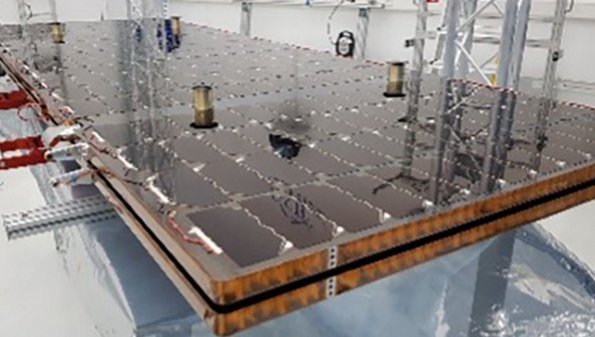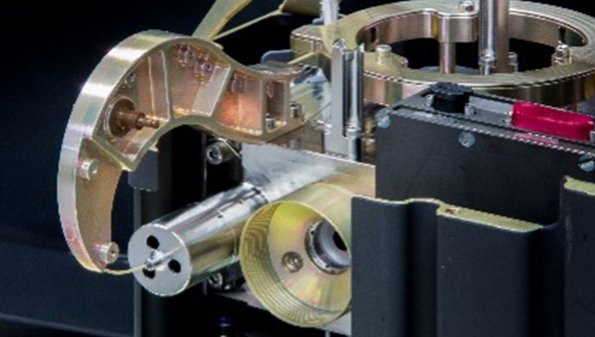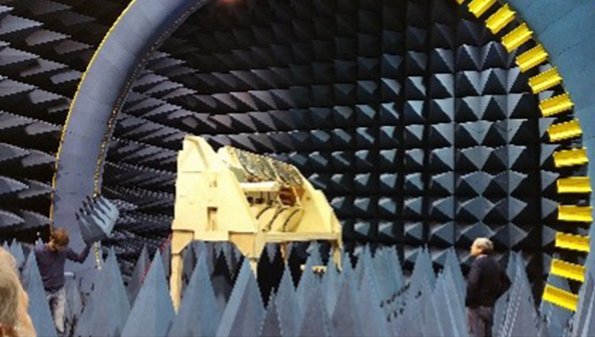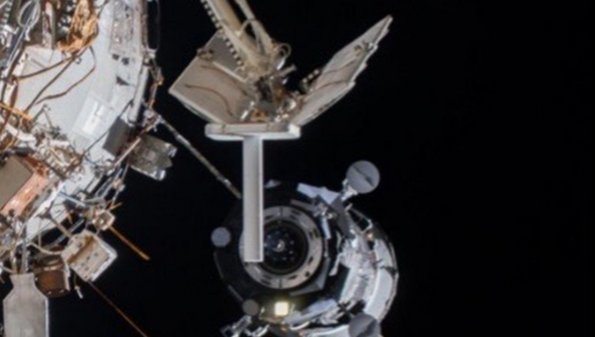What a journey! With the successful launch of OneWeb satellites on February 10th, 2022, more than 1,000 SpaceTech units - to be exact, 1038 units on 442 satellites - are in orbit on many different satellites as well as on the ISS. We are proud to state that all of them either are working nominally or are exceeding their specification significantly.
18 years STI – from start up to established space system provider
2004, long before “NewSpace” became popular, STI was founded, driven by the idea to make spaceflight more affordable, more efficient, smarter and easier. Sharing the STI founders’ vision, others quickly followed. Now being an SME with 120 employees this vision remains our biggest driver. We look back on many success stories, forming a great space heritage that our customers and partners benefit from. We are part of space missions with worldwide recognition such as GRACE Follow-On, ICARUS, OneWeb and YORK as well as a multitude of ESA and EU missions, such as several Copernicus Sentinels, Galileo, EUCLID, PLATO, JUICE and LISA…they became too many to list them all without boring our readers. Small or big project, we never lose our start-up spirit, discovering new ways in the space sector.
We offer a wide range of products, ranging from solar arrays, mechanisms and carbon fiber structures to whole photonic and quantum technological instruments and End-to-End space systems.
STI solar arrays – smart design and automated production
With about two solar arrays leaving our factory each day, SpaceTech has acquired a leading role in the global space solar array market. Starting with body-mounted and single-hinge deployable solar arrays, we now also design and manufacture highly demanding multi-hinge deployable solar arrays with up to five panels per wing, including deployment mechanisms and solar array drive. Smart deployment system design, highly automated yet flexible panel production and photovoltaic assembly laydown processes enable us to provide solar arrays - fast and highly cost effective from single satellite missions to large satellite constellations.
SpaceTech solar arrays and solar array deployment mechanisms are flying in orbit on a multitude of institutional Earth Observation satellites as well as on commercial missions from e.g., York and OneWeb. With more than 163 solar arrays and more than 800 deployment mechanisms currently in orbit, we have acquired a veritable space heritage.
Beyond our growing business with commercial customers, the successful acquisition of the solar arrays for 4 out of 6 upcoming Copernicus Expansion satellites speaks for itself. Our solar arrays are not only cost effective, but can also fulfill even the most demanding requirements. To satisfy the increased demand in our products we are currently expanding our production capabilities in our new solar array factory, with production start in 2022.
STI optical instruments – photonic quantum technology
Starting around 2012 with the laser ranging interferometer (LRI) for GRACE Follow-On and several subsequent activities for national and ESA missions, STI has established itself as a competence center for laser-optical instruments for space.
Our team of laser specialists covers the optical, opto-mechanical and electronical expertise required to develop laser metrology instruments, optical frequency references and quantum technology systems like optical clocks for space.
With the LRI by far exceeding the nominal performance and lifetime, we are now developing the optical frequency reference unit for the French-German Lidar Mission MERLIN, a multi-species frequency reference for future LIDAR missions, the laser system for LISA and we have been selected to perform the pre-development of the Laser ranging interferometer for NGGM, ESAs “Next Generation Gravity Mission”. NGGM is intended to fly in constellation with GRACE-I, the successor of GRACE Follow-On and ICARUS, for which STI is again contributing to the laser ranging interferometer in cooperation with our US partners at JPL and with the Albert Einstein Institute Hannover. GRACE-I and NGGM are currently both in Phase A and are expected be confirmed for implementation in 2023. As part of the COMPASSO team we are contributing to the first European optical clock in space.
STI small system integrator – ISS & small satellites
In its third activity focus STI is realizing End-to-End space systems, be it on the ISS, such as ICARUS, in operation on the ISS since 2020, or small satellites. For this, STI has been preparing its team from begin on. After several mission studies and a small satellite kit delivered to Taiwan, STI is now capable to provide complete solutions for small satellite missions within a network of partners for all necessary platform units.
New Ways 4 Space!
It is impossible to imagine life today without spaceflight. With high growth rates, the space sector is becoming more and more important economically compared to other industrial sectors. Space is ideally suited to contribute solutions to the pressing global issues of climate change, communication and security. Many countries around the world have recognized its importance as a factor for the future and are investing heavily. We are therefore pleased with the German government's clear position to further strengthen SME in the space sector in terms of technology, automation and their participation in missions such as GRACE-I, HRWS and the European secure connectivity initiative. Together, with our agencies and our commercial customers and with the expertise as well as enthusiasm of our team, we find new ways for space!








